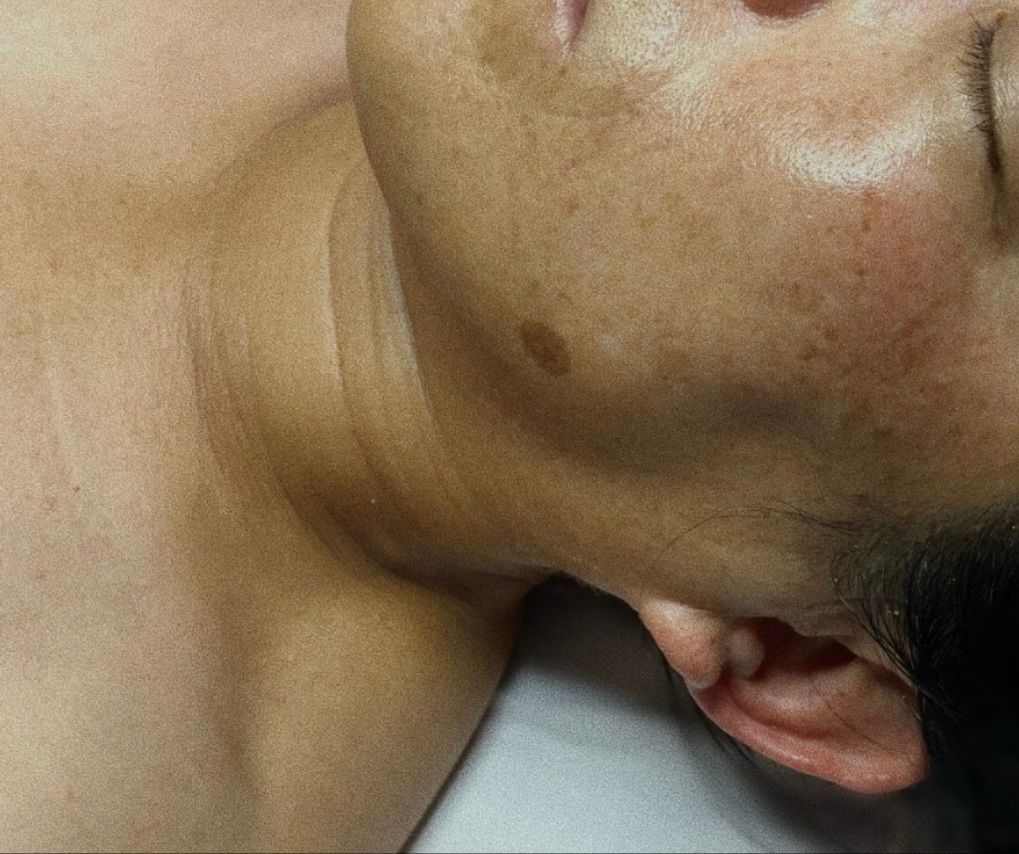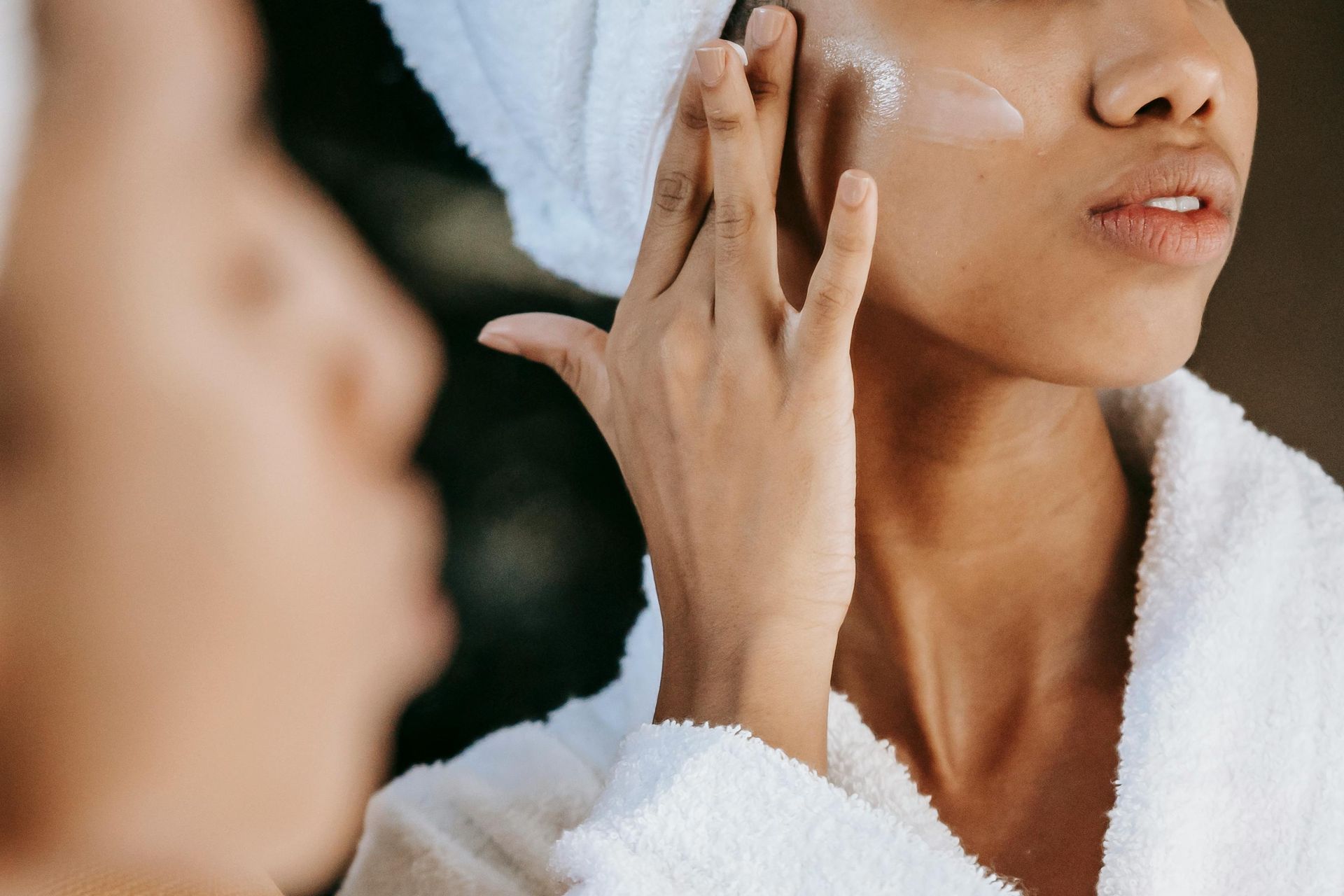Why Your Skincare Routine Should Change from Morning to Night
August 6, 2025
What Products to Use in the AM and PM
Our skin is the largest organ in our body - and it works hard for us. It protects against external elements, regulates body temperature, detoxifies, and more. Throughout the day, our skin is exposed to damaging factors like UV rays, pollution, harsh winds, and fluctuating humidity levels. At night, while we sleep, our skin shifts into repair mode, regenerating new skin cells and recovering from the day's stressors.
This natural rhythm lays the foundation for how we should structure our skincare routines:
Protect in the morning, repair at night.
Your Morning Skincare Routine: Focus on Protection:
When selecting skincare products for the morning, prioritize ingredients that shield your skin from environmental aggressors and oxidative stress.
Key Protective Ingredients:
- Zinc Oxide & Titanium Dioxide - Physical sunscreen agents that protect against UV radiation.
- Antioxidants (Vitamin C & E) Help neutralize free radicals and prevent oxidative damage.
Suggested AM Routine:
- Cleanse - Start fresh with a gentle cleanser.
- Hydrating Mist or Toner (optional) - Adds lightweight hydration.
- Antioxidant Serum - Look for one with Vitamin C & E
- SPF - Always finish with a broad-spectrum sunscreen to protect against UVA & UVB
This simple but powerful routine will help keep your skin hydrated and protected throughout the day.
Your Nighttime Skincare Routine: Focus on Repair
At the end of the day, your skin needs a reset. It has accumulated dirt, pollution, makeup, and SPF, which can clog pores and hinder regeneration if not properly removed. Nighttime is when you should focus on throughly cleansing and nourishing your skin.
Key Restorative Ingredients:
- AHAs & BHAs (ex. lactic, glycolic, and salicylic acid)
- Chemical exfoliants that slough off dead skin cells and enhance product absorption.
- Retinol - Boosts cell turnover and promotes skin renewal.
Suggested PM Routine:
- Oil Cleanse - Breaks down makeup, SPF, and excess sebum.
- Gel or Foaming Cleanser - Removes residual impurities.
- Hydrating Mist or Toner (optional) - Replenishes moisture post- cleanse.
- Chemical Exfoliant or Retinol - Supports skin regeneration
- Eye Cream (optional) - Targets fine lines or puffiness.
- Moisturizer - Locks in hydration and supports the skin barrier. (helps with dryness that may occur from retinol or chemical exfoliants.)
Pro Tips:
- Incorporating a hydrating toner or essence can give your skin a much-needed moisture boost, especially if you're using active ingredients like exfoliants or retinol.
- Avoid using retinol and chemical exfoliants together to prevent irritation. Instead, alternate between them on different nights.
Conclusion
Caring for your skin isn't just about what products you use - it's also about when and how you use them. By tailoring your routine to the natural rhythm of your skin - protection during the day and repair at night - you can support its function, maintain a healthy barrier, and reveal a glowing, radiant complexion. Whether you're a skincare beginner or a seasoned enthusiast, these routines will keep your skin thriving around the clock.

We're approaching "peel season" -- the cooler months of fall and winter, when conditions are optimal for chemical peels. With less intense sun exposure and drier weather, it's the perfect time to rejuvenate your skin. Let's break down what chemical peels are, their benefits, and why now is the best season for them. What Are Chemical Peels? Chemical peels are professional treatments that use acidic solutions to exfoliate the skin and remove excess buildup of dead skin cells from its surface layers. Peels come in varying strengths: Light peels -- Work on the epidermis (outer layer) and are commonly performed in spas and skin clinics. Medium and deep peels -- Penetrate deeper into the skin, up to the dermis and are typically done in dermatologist offices, medical spas, or advanced skin clinics. Regardless of strength, chemical peels resurface dead skin cells and support the skin's natural cell renewal factor (CRF), helping to maintain long-term skin health. Benefits of Chemical Peels When performed by a professional and paired with a good at-home skincare regimen, chemical peels deliver powerful results, including: More even skin tone Smoother texture and softened fine lines and wrinkles Enhanced product absorption Reduced acne, clogged pores, and hyperpigmentation Improved hydration and cell renewal Boosted collagen production Brighter, more radiant skin Who Should Get a Chemical Peel? Chemical peels are a great option for anyone seeking smoother, more luminous skin. However, a professional skin analysis is essential before treatment. Ideal candidates should also have: A healthy skin barrier Consistent daily sunscreen use Contraindications to keep in mind: Recent surgeries, laser resurfacing chemical peels or dermabrasion Recent Botox or filler injections Active use of retinoids (must stop 3-7 days before a peel) Certain ingredient allergies Pregnancy (avoid salicylic acid and retinol, consult a physician) Herpes simplex (risk of triggering a flare-up) Strong hyperpigmentation tendencies with deeper peels Inflamed skin, sunburn, open sores, or active irritation Why Fall and Winter Are the Best Seasons for Peels Cooler months are ideal for chemical peels because your skin is less exposed to direct sun and heat, reducing the risk of post-treatment hyperpigmentation. Additional seasonal benefits include: Repairing summer sun damage Removing dry, dead skin caused by colder temperatures Allowing your skin to heal and rejuvenate with less environmental stress Conclusion Chemical peels are a safe and effective way to refresh your skin, boost radiance, and address common concerns like fine lines, acne, and uneven complexion. Fall and winter provide the perfect window for these treatments, allowing you to maximize results while minimizing risks. At Gymno , we offer customized chemical peels tailored to your skin type and goals. We ensure your skin is properly assessed and prepped, so you achieve the healthiest, most radiant results possible. Ready to glow this peel season? Book a facial with us today and let's create a personalized treatment plan for your best skin yet.

Hyperpigmentation is the result of an overproduction of melanin in the skin. While melanin is essential for protecting us from UV damage and giving our skin, hair and eyes their color, excessive or uneven production can lead to dark patches and spots. The most common types people seek treatment for include post-inflammatory hyperpigmentation (PIH), solar lentigo, and melasma. It can be triggered by multiple factors such as sun exposure, hormonal changes, inflammation, certain illnesses, or even medication. Let's break it down further. What is hyperpigmentation? Hyperpigmentation occurs when melanin is produced in excess and distributed unevenly across the skin. This often results in darker spots or patches. While sun exposure is one of the biggest triggers-- prompting the skin to release melanin as a protective response-- internal factors such as hormones or inflammation can also play a role. This condition is more prevalent in darker skin tones across all ethnicities, including Asian, Black, Hispanic, and Middle Eastern individuals. Types of Hyperpigmentation 1. Post Inflammatory Hyperpigmentation (PIH) PIH develops in areas where the skin has been injured or inflamed - commonly after acne, cuts, or scrapes. The immune system respond by producing excess melanin. How to reduce PIH: Prevent acne and minimize injuries when possible. Keep pores clear by double cleansing daily and exfoliating weekly. 2. Solar Lentigo ("Liver Spots") Solar lentigo appear as darkened patches on areas frequently exposed to the sun. UV radiation stimulates melanocytes (melanin-producing cells), which can create an uneven distribution of pigment. If melanin is evenly spread, the skin tans. However,when produced in excess, stubborn dark spots form. These sun-induced spots are notoriously difficult to treat, which makes prevention through sun protection especially important. 3. Melasma ("Pregnancy Mask") Melasma is strongly linked to hormonal changes, pregnancy, or birth control. It commonly appears as brown or gray-brown patches across the cheeks, forehead, or upper lip. Because it often resembles a mask, it is referred to as the "pregnancy mask". How to Treat Hyperpigmentation While treatment methods vary, the foundation of every plan is prevention and consistency. 1.Daily Sun Protection Broad-spectrum sunscreen should be applied every single day. Even minimal sun exposure can stimulate melanin production, especially for those prone to hyperpigmentation. 2. Exfoliation Exfoliating helps shed pigmented skin cells ad reveal fresh, evenly toned skin. Retinol: Increases cell turnover, promoting the growth of pigment-free skin cells. AHAs: Help remove dead, pigmented cells from the surface. 3.Tyrosinase Inhibitors These ingredients suppress melanin production at the source by inhibiting the tyrosinase enzyme. Common options include: Hydroquinone (prescription only) Arbutin Kojic Acid Bearberry Extract Niacinamide Glutathione Tranexamic Acid When incorporated into a consistent skincare routine, these ingredients help fade existing discoloration and prevent new spots from forming. 4. Professional Treatments For more stubborn or severe hyperpigmentation, professional procedures performed by dermatologists or licensed skin specialists can deliver faster and more targeted results. Some options include: Chemical Peels: Use acids to exfoliate and lighten pigmentation. Laser Therapy: Targets deeper pigmentation with precision. Liquid Microneedling: Stimulates skin repair and can improve pigmentation when combined with topical serums. IPL (Intense Pulsed Light): Uses light energy to break down pigment and even out skin tone. These treatments should always be performed by a qualified professional to minimize risks and ensure optimal results. Conclusion Hyperpigmentation is a common yet complex skin concern, often influenced by both external and internal factors. While it may not disappear overnight, a combination of prevention, and corrective treatments both at home and in a professional clinic can significantly reduce its appearance. Consistency is key--protecting your skin daily and adopting the right routine can help restore a more even, radiant complexion. Ready to Take the Next Step? Visit us at Gymno to get a customized plan to treat your hyperpigmentation. We offer a variety of treatment options designed to help you achieve the best results for your skin.


